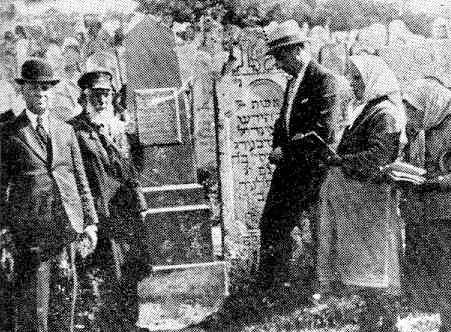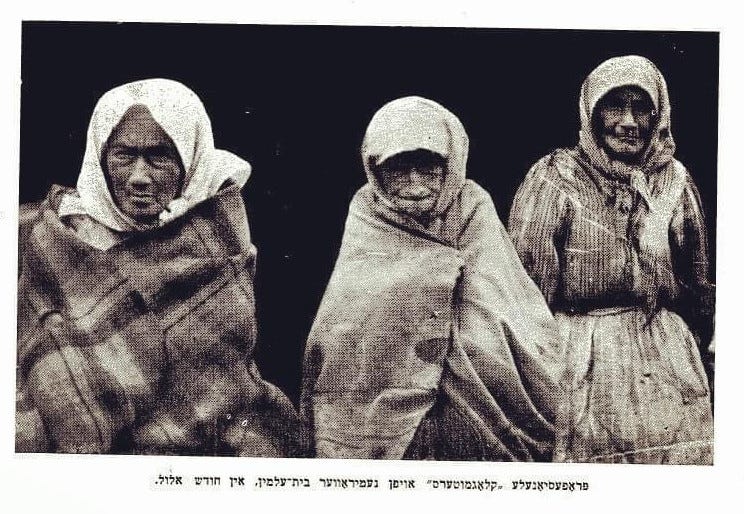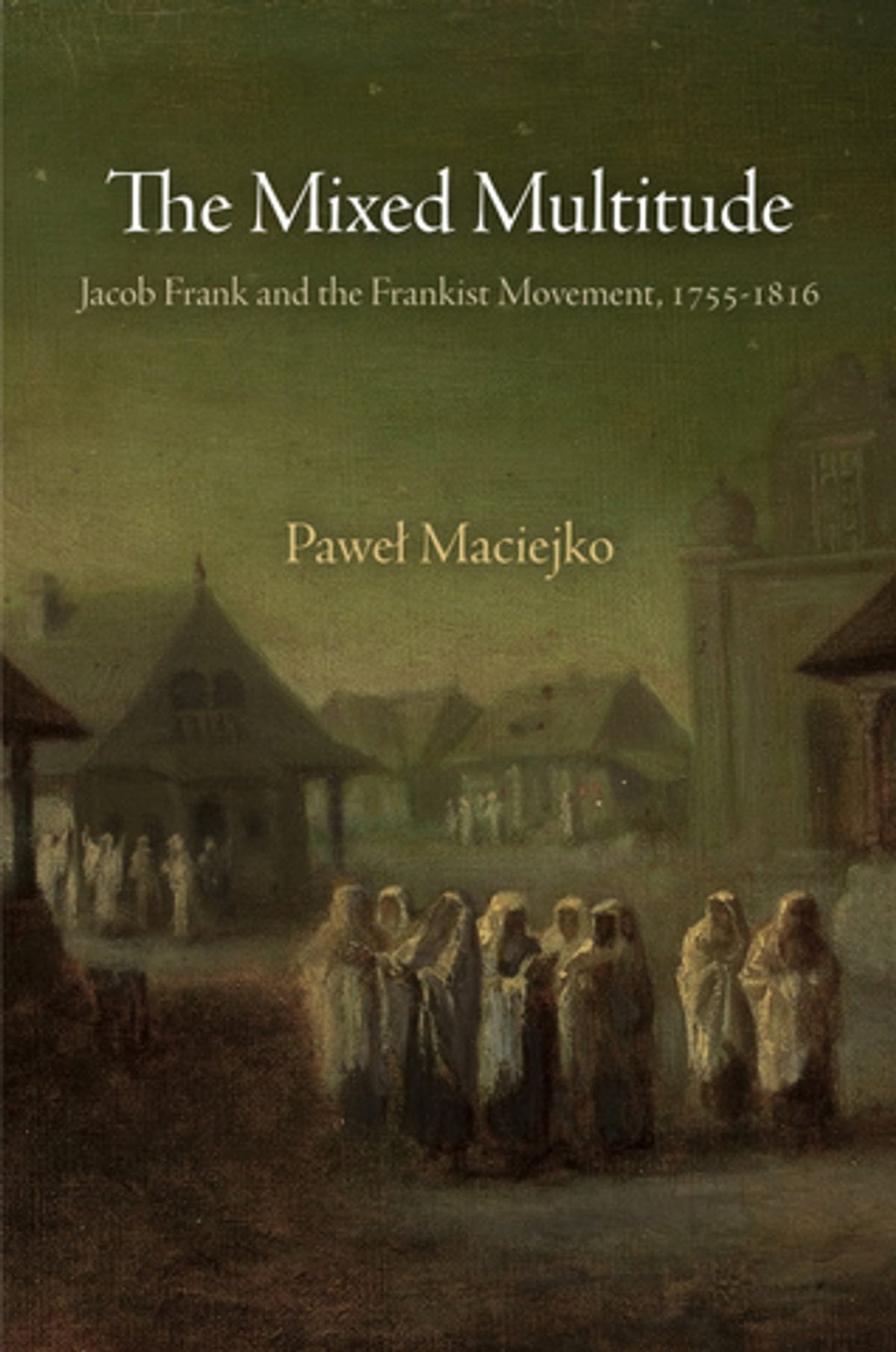"A funeral without wailing1 is like a wedding without klezmer."
The quote above is often heard in klezmer circles, but in reverse. In its original form it is provocative- the truth is, Eastern European Jewish funerals did feature wailing, although its hard to tell how common it was.
Luckily, I don't have to cobble together far-flung sources for this post. The wonderful Annabel Gottfried-Cohen, who has the language and historical skills, has done it for me. Her wonderful blog is the place to go for references to Jewish wailing women (and other female mourning practices) amongst Eastern European Jews.
What do we learn?
First, they were there. They made it to the 20th century. No small feat for a female-based practice older than Judaism itself. We actually have pictures of them, which are amazing. And we would have had recordings had An-Ski been able to go on one more expedition.
Second, wailing belonged to a wider network of female funereal and pagan practices. This included cemetery measuring (encircling graveyard with a string and then making candles from that string), evil eye and healing traditions.
Third, spontaneity. A crucial component of "wise women" going back to the biblical days is the idea of inspired spontaneous speech, which taken to its extreme becomes prophecy. Here we find it again. And again, Gottfried-Cohen is on the case (see her spontaneousprayer.com) The importance of spontaneous2 speech for our purposes is that it is (1) orally based and (2) inspired, or emotional, very different than the textual and legalistic male dominated traditions.

Fourth, a sub-theme to this thread has been the role of restraint in mourning. We see both extremes when looking at the lament in Jewish tradition.3 Eastern Europe seems to be mostly in the "not restrained" camp. Anecdotes of wailing include what seem like exaggerated over-performances.
Gottfried-Cohen sees this emotionality as an old world challenge to our tame modern sensibilities. That sensibility certainly seems to be a vast moat that separates contemporary klezmer performance (musicians and audiences) from the old stuff. I've often seen audiences frustrated when they are unable to interact with the music. See the next and concluding post for more on this.
But restraint was also a value. I also think, once again, of Zev Feldman learning from Tarras that his earnestness and over-enthusiasm missed the mark. Which one was it? Or is our language too imprecise to capture what’s happening?
Finally, we don't see dance, which was rather strictly regulated in Eastern Europe. And certainly no drums, although it’s hard to know exactly what was happening since sources are scant. As we’ll see below, the connection between grief and dance was made in terms of the khosidl, and there was the toyten-tanz (death dance), but these were not, I think, performed in the context of funerals. I would love to be proven wrong.
Wailing and Klezmer
Is there any evidence of a relationship? First, we have a ton of evidence of the connection between klezmer and lamenting in the general sense:
Beregovsky spoke of the “deep emotionality, expressivity, and the ability to affect the listener” associated with the best of klezmer musicians, who were always able to move their listeners deeply and bring them to tears. (Rubin)
And there must always occur a mournful feeling in these melodies; the more there is of it, the more it moves the listeners, the greater and the more important the violinist’s art and the value of the music itself. It is not hard to see how many of the original, individual, ingenuous characteristics of Jews [only] are hidden in laments. And more than that, laments reflect all the best hopes and sufferings of the Jewish people, and one can only wish that these living monuments of the folk creativity would not vanish. Lipaev (see footnote below)
National features show in every measure of Kholodenko’s concertos. If you look into them and listen to them carefully, you will notice that Kholodenko’s concerts are nothing less than laments [“sorres”] with all their elements increased. Lipaev4
The khosidl dane: its controlled movements and the grief of the soul expressed by the dancer distinguish it from other dances”. Stutchewsky via Feldman
Shulik’s fiddle caused a river of tears to flow from the women, who sat still and quiet in the room. Shulik Klezmer via Strom, Book of Klezmer
Stingatsh, whom they had brought to play at the wedding supper, … closed his dark eyes and the sounds of weeping, hatred and bitterness, of pleading and humility, and pain and assurance, bewitched the hall in a deep silence… When he opened his closed dewy eyes they were greeted by teary Jewish faces. Golda Buchman-Kremer in a memoir of her childhood (Mayn Shtetl Yedenits, 1930s) from Carlyle, Kleznorth
I suddenly heard a quiet doleful violin emitting an ancient and deeply plaintive melody. In the doorway, I saw a famished, tattered, embittered Jew in his fifties, playing an old poor violin. And both were weeping, both were shedding silent heartrending tears. … There were no weddings, no celebrations. Who needed a klezmer? But he had heard that a “Committee Officer” had come. So he had dug up a violin somewhere to welcome me with. An-ski (~1919-20) in Khurbn Galitsye (Neugroschel, p. 247) this tortured chain of references also comes from Carlyle, Kleznorth
And so on.5
But we have exactly zero references to klezmer and the specifically female lament.6 Keep in mind, this lament tradition was alive enough that An-Ski was asking about it in his community survey in the 20th century. We don’t even see a lot of discussion of ornaments in klezmer in the context of the much more well-preserved genre of female folksong (see below for more). This form also has an unique set of traits, slightly different from cantorial singing and is also very lament heavy. Didn't the klezmers have mothers?
In many contemporary klezmer discussions, lamentation is discussed solely in regards to the temple and the diaspora, and the specific lamenting quality is always in the context of cantorial traditions. “The synagogue was the conservatory for the klezmer.” (Strom) “The ornaments, called dreydelekh, are more than mere embellishments. Inspired by the Jewish vocal traditions of cantorial singing and Torah cantillation, they constitute the very structure of klezmer music.” (Klezmer’s afterlife) “His ability to imitate the crying, the uluating, the moaning and laughing cantorial techniques he heard since an infant was shaped into specific klezmer ornamentations.” (Strom, Book)
More research on this topic could look at how, despite cantorial traditions remaining relatively consistent, attitudes towards ornaments and their performance have diverged widely in secular and Hasidic communities (also in American and Israeli klezmer). A paradox: To generalize, current Hasidic klezmers, who we assume are bathed in cantorial traditions, seem to be less concerned with ornament. More secular folks, on the other hand, are completely obsessed with ornament, seeing it as the essence of the music. Why? If we’re honest, this is not about temples. This is about our understanding of the female lament as imparted to us by other musical traditions. Our desire for this particular musical frisson comes from our own culturally informed taste for music that is not simply exciting or energizing, but emotionally intense.
Finally, the one place perhaps where the overlap is most powerful is gesture. The same gestures that are found in dancing and mourning are not found commonly in synagogues. Do these gestures complete a communicative loop between performer and audience, encouraging the musician to go deeper in lament?7 Are they an essential part of the ritual, part of the call and response between musician and audience? Does their evocation of the same sort of lament that the musician is conjuring tell the story and give the music meaning? Or are they coincidental?
Rupture
My hunch is comparisons with the funeral lament would be unwelcome by the klezmorim of old for two reasons- the female and Oriental associations. This might also explain Tarras’ restraint- an attempt to distinguish himself from both of those strains. For comparison, consider Naftule Brandwein, who played with less restraint, and was said to be more Greek or Turkish in style (Tarras, Strom).8 In the Greek tradition, the lament and its musical descendants, like the amanes and rebetika, were explicitly seen in the context of the female and the orient.
In Greece, as a number of researchers have observed both laments (mirologia) and the women who sing them (mirolistres) have been regarded, throughout history, with some ambiguity. They may be considered essential at the time of death, but otherwise they are often avoided, even shunned by Greek men. Moreover, there is a long line of thought in Greece, beginning in antiquity9and continuing through the Byzantine period, that associates lament, especially excessive lament, not only with the female but with the Orient, namely with Asia Minor. (H-W in Greek Music in America)
In addition, the klezmer lament was already fading out, along with its repertoire of listening music, in the New World. As Zev points out, this led to a flipflop of the Old World understanding, “(Lipaev) focuses on the lament instead of any form of dance music as the prime example of "klezmer", another contrast with the common American perception of klezmer.”
For secular Jews, who don’t have that much of a raw emotional connection to the tragedy of the diaspora, perhaps it is useful to know the lament was originally found in para-religious existential questions of mortality, loss and grief.
Hasidic Anti-Weeping
…Only joy brings one close to the Almighty, and the joy inherent in the sound of music can improve the world. Moreover, sadness is identified with wailing, which emanates from evil. R. Nachman writes: “Thus most of the evil make mournful, wailing music for they are a motley multitude and the mother of this teeming multitude is Lilith [a legendary figure considered one of the devil’s minions. The Talmud describes Lilith as a long-haired seductress]. She wails constantly and therefore their music is baleful.” - Shiloah Amnon
The reference to the “teeming multitude” is a complex, historical one, related to the heretical antecedents to Hasidism that just so happened to give priority to the female, the musically prophetic and the Orient. The references to Lilith would have been understood to reinforce these associations. The Wailer becomes the Witch.
Although there are a few more quotes I could pull to demonstrate Hasidic antipathy to sadness, I don’t think its fair to say they neglected that side of life. There are plenty of weepy Hasids. The confusion in this whole situation is exemplified by the klezmorim, whose virtuosity was measured in sadness, but whose raison d’etre was to play music to fulfill the mitzvah of bringing joy.10
Conclusion
For many reasons, the female lament and klezmer didn’t consciously overlap. I think in the places it “was allowed to”- Brandwein, with his non-literate, “Oriental,” transgressive style, or in the occasional sublime female folk-song- it was able to achieve the same artistic heights one finds in the urban forms of other cultures from the same time.
But perhaps the story of klezmer is unintelligble without that cross-over. Our understandings of the source of the lament in solely religious terms both obscures the historical truth and encourages us to dismiss our own emotional intuitions. Does the lament have one more chapter to write? To find out, we’ll investigate what it would mean to bring it back, and explore one attempt to do so.
wailing= “geveynt”: comparison "vi a klogmuter (ווי א קלאגמוטער) - like the leader of a group of professional mourners"
See my earlier post for more on ethnic varieties of spontaneity.
See Aesthetics of Sorrow for a useful brief summaries of wailing characteristics in other Jewish communities, including Ethiopian, Iranian, Bukhara, Calcutta, etc
The word lament here is the choice of the translator, from the article’s notes: Walter Zev Feldman aptly translates the term [sorres] as “lament” in his work, and to avoid confusion over an unfamiliar and unverifiable usage, the choice has been made to replace sorres with lament(s)
Of course, see also Joel Rubin’s quote that I began this essay with, “It would appear, then, that virtually all of the terms associated with emotional aspects of the music and, in particular, with ornamentation are expressions of a sad or lamenting quality." (Joel Rubin)
Always hard to prove a negative. I’d love to be proven wrong.
See the section Theater from this post on phrasing and gesture.
I’ve covered the two strains of klezmer, respectable and not, in my previous posts on ornament.
Consider this from Plato: “Then we shall be right in getting rid of the lamentations of famous men, and making them over to women (and not even to women who are good for anything), or to men of a baser sort, that those who are being educated by us to be the defenders of their country may scorn to do the like.” Plato The Republic
This dichotomy in the klezmer world is reflected in some 18th or 19th century klezmer whose name I forget who had two violins, one for slow listening music and one for dance tunes.





